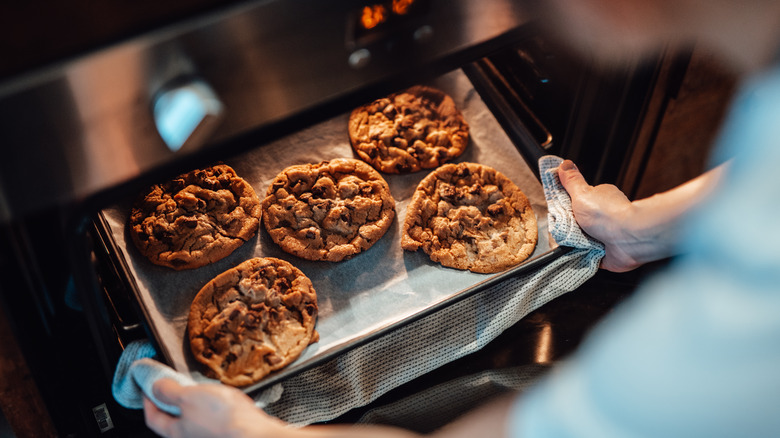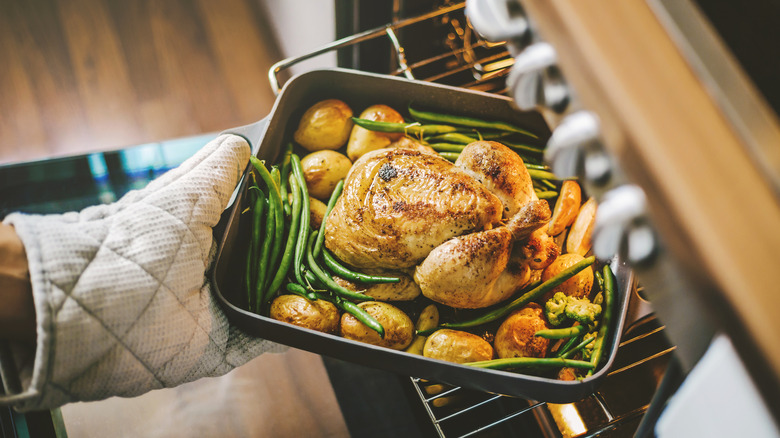The Baking Step You Should Never Skip, Even With A Convection Oven
You've mixed the batter for your favorite chocolate chip cookie recipe, doled it out into identical portions with an ice cream scoop, and yet half your treats are still coming out burnt when you retrieve them from the oven. What's going on? We're guessing you skipped the vital step of rotating your pan halfway through cooking. This move is essential to encouraging an even bake — even while using a modern convection oven that generally cooks food more uniformly and quickly than regular ovens — because every appliance naturally has hot spots.
These fluctuations in temperature occur because of the way ovens work — once they go beyond the temperature they've been set to, their internal heating element turns off to allow them to cool down before the cycle begins all over again. Moreover, while it's true that convection ovens blow hot air around their entire cavity via their exhaust system, they are still hotter at the top and sides because heat rises. Rotating your pan accounts for these issues, thereby preventing your food from burning in certain areas while remaining underdone in others. To rotate one large tray in your oven simply give it a 180 degree turn halfway through cooking so every area of your vessel is evenly exposed to the heat. For two smaller trays or dishes, sitting side by side, at staggered positions, or on different racks, give them the same 180 degree turn but also swap them over.
Heat circulates more effectively around smaller oven dishes
The larger your dish, the trickier it is for the hot air in your convection oven to circulate freely. In fact, a particularly large oven tray can even partially block the portal where the hot air originates, resulting in cookies and roasts that are unevenly baked. It's far easier for the hot air to circulate around a smaller pan or round dish with lower sides because there are no physical hindrances affecting its flow. Be mindful that you'll need to rotate and switch your pans quickly when baking a cake or loaf of bread to prevent the oven temperature from falling swiftly and affecting their capacity to rise. However, you can take longer when making savory dishes that are more forgiving, such as a tray of roasted veggies.
If you still find that your cubed potatoes or roast chicken thighs are coming out of the oven with burnt areas despite troubleshooting through all the common mistakes people make when cooking in a convection oven, use an oven thermometer to gauge the true temperature of your appliance. This nifty piece of standalone kit can be placed in your oven cavity to measure the real temperature inside versus the temperature displayed on the built-in dial on the front. If the two temperatures are wildly different, you may have a damaged fan, broken oven door gasket, or faulty temperature sensor.

